Bhutan Itinerary for 7 Days
- By Seema
- Updated on December 25, 2023
Bhutan is a picturesque valley nestled between the towering Himalayas. The country has it all: beautiful landscapes, vibrant culture, preserved traditions, friendly people, and delectable cuisine. However, it remains one of the world’s least visited countries. The Kingdom of Bhutan, also known as the ‘Land of the Thunder Dragon,’ is a little-known travel secret that is fiercely guarded by its rulers.
The country is not very popular among international travelers due to its inaccessibility, limited infrastructure, travel restrictions, and high Sustainable Development fees. Bhutan adheres to the ‘High-Value Low Impact Tourism’ principle and strives to keep mass tourism at bay. It limits the number of visitors to protect its environment, resources, and culture. Isn’t that reason enough to visit this pristine country?
If you are in the region and have 6-7 days to spare, Bhutan is a country you should visit, especially if you are willing to take the road less traveled. The little kingdom, known as the “Happiest Country in the World,” will enchant you, fascinate you, and, most importantly, touch your soul. Not many countries can make that claim. Seven days may not be enough time to fully explore this enthralling country, but if that is all you have, here is the best itinerary for you.

I haven’t squeezed in too many towns because Bhutan is a place to unwind and absorb in the mystical surroundings. The roads are also winding, narrow, one-way, and have sharp hairpin bends. So the best option is to drive slowly, take frequent breaks, and enjoy the breathtaking scenery along the way. Bhutan can offer a fantastic combination of spiritual experiences, nature hikes, and cultural exploration in a 7-day itinerary.
What are Sustainable Development Fees (SDF)?
The Sustainable Development Fee (SDF) is a daily levy paid by all visitors on a tourist visa to support Bhutan’s growth and development. The SDF is collected as part of the visa application process by the National Exchequer of Bhutan. As of September 1, 2023, the daily SDF has been reduced by half to US$100 per person, per night. Tourists from India, Bangladesh, and the Maldives will be charged a Sustainable Development Fee of BTN 1,200 (approximately Rs 1200/) per person, per night. To encourage tourism in the less-visited Eastern Bhutan, the SDF will not be levied on visitors visiting 11 districts in the region.
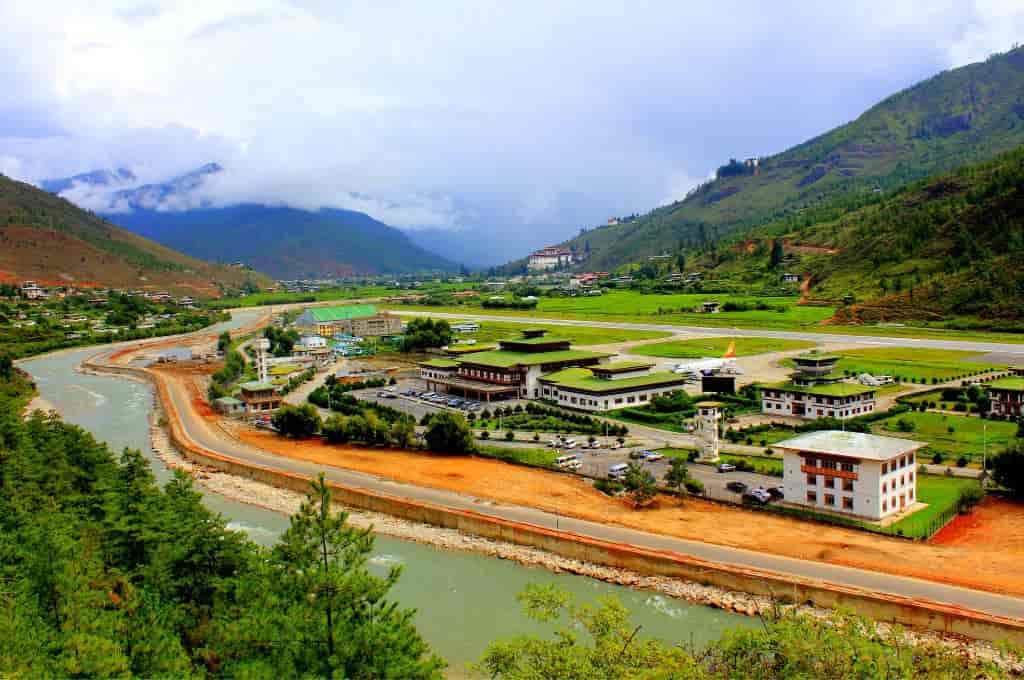
Suggested Seven-Day Bhutan Itinerary:-
Day 1: Arrive in Paro, transfer to Thimphu, and spend the night in Thimphu.
Day 2: Explore Thimphu; Overnight in Thimphu.
Day 3: Drive to Punakha, stopping at Dochu La Pass. Stay overnight in Punakha.
Day 4: Explore Punakha and the surrounding areas. Spend another night in Punakha.
Day 5: Drive to Paro and explore the town. Overnight stay in Paro.
Day 6: Hike to Tiger Nest Monastery. Another night in Paro
Day 7: Return flight
Detailed Bhutan Itinerary - 7 Days
Bhutan Itinerary Day 1 – PARO & THIMPU
Landing in Paro is an experience in itself. Paro International Airport is located in a deep valley, and you can admire the spectacular views of the snow-capped Himalayas as you descend into the lush green valley. Make your way to Thimphu, Bhutan’s capital city. The scenic drive through the woods will take well over an hour. Check into your hotel and spend the rest of the day resting and acclimatizing. Stay in Thimphu for the night.
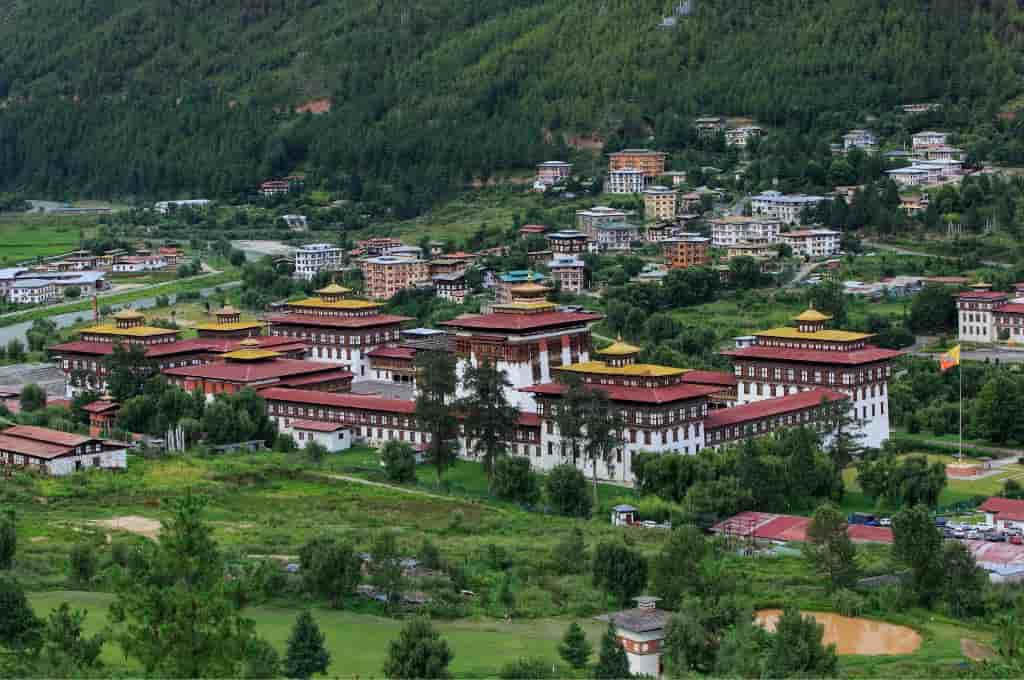
Bhutan Itinerary Day 2 – THIMPU
Begin your journey in Thimphu, Bhutan’s capital. Thimphu is a modern city with high-rise buildings, but its sacred culture and heritage have been preserved. Visit the Memorial Chorten and the Buddha Dordenma, one of the world’s largest Buddha statues. You can also explore the 17th-century Tashichho-Dzon and shop for local wares and handicrafts at the local craft bazaar. The city is ideal for sampling Bhutanese cuisine. You’ll be staying in Thimphu for another night.
Places to visit in and around Thimphu, Bhutan:
- Buddha Dordenma statue – 50 m tall statue
- National Memorial Chorten – the stupa built to honor the third Druk Gyalpo, Jigme Dorji Wangchuck
- Thimphu Dzong – the seat of Bhutan’s Government
- Centenary Market
- Tashichho Dzong – Buddhist monastery and fortress on the outskirts of Thimphu.
- Takin Preserve – a wildlife reserve area for Bhutan’s national animal, the Takin
- National Textile Museum
- Junghi Handmade Paper Factory
- Folk Heritage Museum
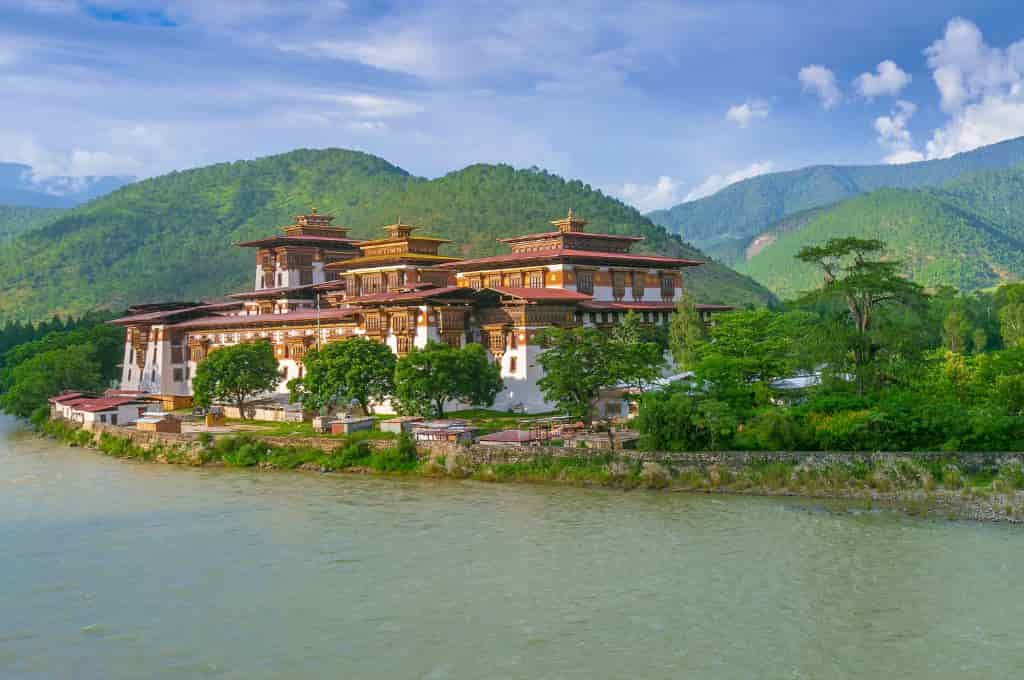
Bhutan Itinerary Day 3 – PUNAKHA
Leave early in the morning for Punakha; the drive will take approximately three hours. You can halt at Dochula Pass, which displays 108 Chortens built to commemorate Bhutan’s victory over Indian militants. Punakha is a riverside town known for its charming rivers, majestic fortress/Dzong, picturesque rice fields, and breathtaking vistas. Explore the iconic city at your leisure. Discover Punakha Dzong, which sits at the confluence of the Pho Chhu and Mo Chhu rivers. Stay the night in Punakha.
Places to visit in and around Punakha, Bhutan:
- Chimi Lhakhang Temple – the Fertility Temple
- Punakha Dzong – the oldest, largest, and most striking fortified monastery in Bhutan
- Punakha Suspension Bridge – a 590-foot-long suspension bridge adorned with colorful prayer flags
- Khamsum Yulley Namgyal Chorten – a stupa overlooking the Punakha Valley
Bhutan Itinerary Day 4 – PUNAKHA
Spend the day exploring the rest of Punakha’s attractions. Rafting is permitted on the Pho Chhu and Mo Chhu rivers. Alternatively, wake up early and go on a short trek to Chimi Lhakhang Temple. It is known for inducing fertility in all visitors who come here hoping to have a child.
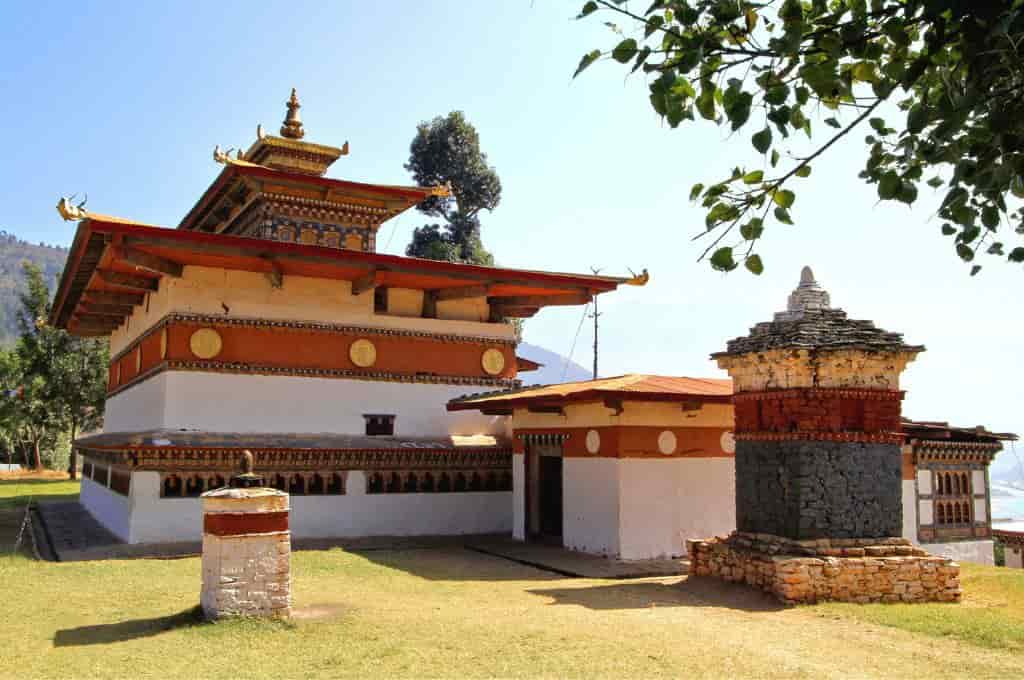
Bhutan Itinerary Day 5 – PARO
Head back to Paro. The journey will take about four hours. With mountains on one side and a river on the other, the panorama is stunning. The quaint little town exudes old-world charm, complete with traditional houses, paddy fields, and natural beauty. Mountain biking, rafting, and hiking are all available in Paro. Stay in Paro for the night.
PS – If you want to take a day trip from Paro to the idyllic Haa Valley, you should arrive on the fourth night so that you can leave early. The drive from Paro to Haa Valley takes about two hours.
Top Places to visit in and around Paro, Bhutan:
- Khamsum Yulley Namgyal – one of the oldest and most sacred shrines in Bhutan
- Paro Dzong – Buddhist monastery and fortress
- National Museum of Bhutan
- Druk Choeding Temple – a 15th-century monastery
- Ugyen Pelri Palace – a stunning example of Bhutanese architectural design
- Chele la – the highest motorable pass in Bhutan
- Rinpung Dzong – a Buddhist monastery and fortress
- Dumste Lhakhang – an unusual chorten-like temple
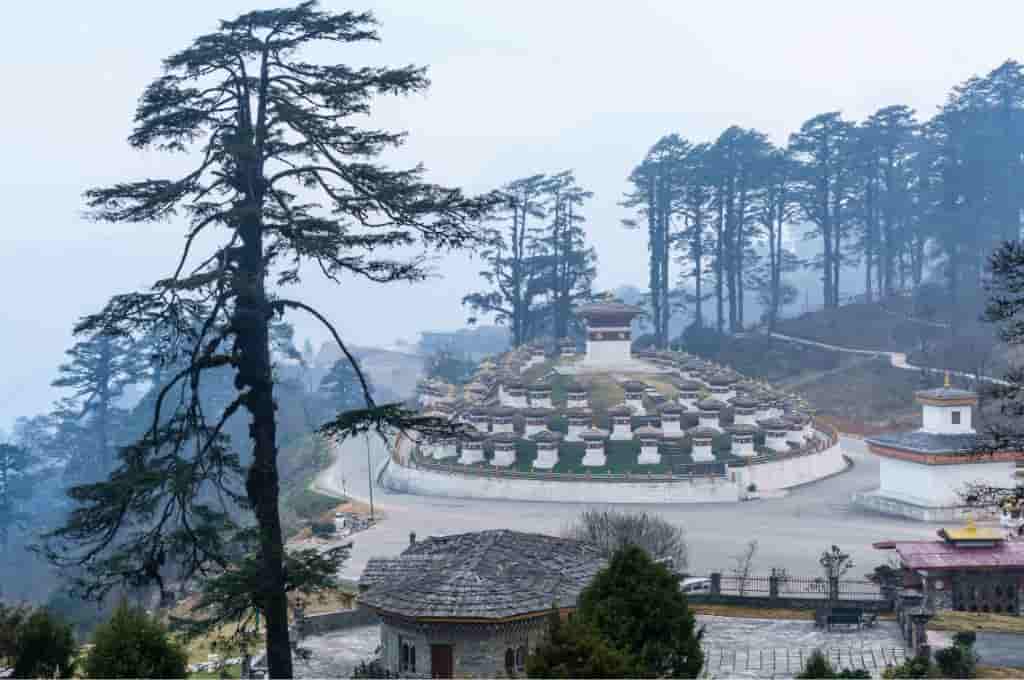
Bhutan Itinerary Day 6 – Paro
Early in the morning, set out on a 1000-meter hike to Tiger’s Nest Monastery, one of Bhutan’s most iconic sights. Tiger’s Nest, perched perilously at over 3000 meters on the edge of a narrow cliff, is the highlight of this itinerary. You must climb for 2-3 hours to get to this 17th-century temple complex. It’s a steep uphill climb at high altitudes, so take it slow and easy. As you climb the steep trail, you will be rewarded with spellbinding beauty, clean air, and mystical serenity. According to legend, Guru Rinpoche was transported to this particular spot by a flying tigress, hence the name. You’ll be exhausted after such a perilous excursion. Return to your hotel for the night.
Bhutan Itinerary Day 7 – Paro
Your Bhutan vacation has come to an end. It is time to depart from Paro International Airport and return home.
PS – This itinerary is still manageable if you have less than 7 days. Shorten your stay in any of the three cities based on your preferences.

Things to Know Before Traveling to Bhutan
- The best time to visit Bhutan depends on your preferences and the activities you plan to engage in. The peak months are from March to May (when flowers are in full bloom) and September to November (the best time for trekking). June-August is monsoon season. Although you may be caught in a few showers and landslides, the prices will be lower and Bhutan will be lush green. If you want to see snow, go between November and February. However, you may encounter roadblocks and detours
- Bhutan has only one international airport, which is located in Paro, and only two airlines are permitted to operate: Druk Air and Bhutan Air. They only fly from selected places like Delhi, Mumbai, Kolkata, Bangkok, Kathmandu, Singapore, and Dhaka. As a result, international connectivity is a major concern. You can also travel by road from neighboring countries.
- As there is little public transportation in Bhutan, booking a taxi for the duration of your stay is the best option. Long-distance trips are usually charged a flat rate. Ask your driver to make all the necessary arrangements.
- Dzongkha is the national language of Bhutan. However, English is widely spoken and understood all over Bhutan.
- The Bhutanese currency is the Ngultrum, which is equivalent to 0.012 USD. ATMs are scarce, and international debit and credit cards are rarely accepted. You are also charged an additional fee. So always keep enough cash on hand.

- Bhutan is noted for its intricate textiles, thangka paintings, and wooden crafts, so look for lovely prices to bring home. Unlike in other parts of Asia, you are not expected to haggle for everything if you plan to go shopping. You typically pay the price listed.
- Citizens of most countries need a visa to enter Bhutan which can be obtained through licensed tour operators. The visa costs $40 and is non-refundable. While the visa is usually issued easily, the process can take up to five working days.
- Citizens of India, Bangladesh, and the Maldives require an entry permit which can be obtained at the port of entry on producing a passport with a minimum 6 months validity. This permit is free. Indians can also get an entry permit by showing their voter ID cards. Aadhar Cards are not accepted.
- When visiting Bhutan, it is mandatory to hire a tour guide and stay in Department of Tourism-certified accommodations for the duration of the trip.
- Carry small bills for tipping, dining, shopping, and other needs because very few businesses accept credit cards.
- Bhutan’s internet service is undoubtedly subpar. Large hotels provide free Wi-Fi but don’t expect lightning-fast speeds. To stay connected, purchase a local SIM card in Paro or Thimphu.
- Bhutanese people hold their royal family in high regard, so respect them.
- Observing local traditions when visiting monasteries, temples, and villages is vital. Remove your shoes before entering sacred sites, dress modestly, and avoid taking photos inside temples unless permitted. The circumambulation of a Buddhist shrine should always be clockwise, whether by car or foot. Avoid public displays of affection.
- Tipping is not required at restaurants or hotels because a 10% service charge is automatically added to your bill when you dine out. Gratuity is not mandatory but is always appreciated.
- Smoking is not permitted in public areas
- It is not safe to drink tap water in Bhutan.
PC – Flickr.com

This Post Has 7 Comments
Thanks so much for sharing this post! I’ve never thought much about visiting Bhutan, but after seeing these pictures and reading about all the things I can do there, I’m bumping it up on my list of places I have to visit soon. It seriously looks so beautiful!
It is different
Thanks for sharing your trip it sounds like you had a lovely time 🙂
This itinerary is fantastic! I’m really excited to explore Bhutan in 2024, and your detailed day-by-day suggestions make planning so much easier. The insights on cultural highlights and must-visit places are invaluable. Thank you for sharing your experience!
This itinerary is fantastic! I’m really excited to explore Bhutan in 2024, and your tips on the must-see destinations and local experiences are super helpful. I especially love the suggestions for trekking routes and cultural sites. Thanks for the detailed planning!
This Bhutan itinerary is fantastic! I love how you’ve included a mix of cultural sites and outdoor adventures. It’s so helpful to see updated tips for 2024. I’m definitely considering this for my next trip—thanks for sharing!
This itinerary is fantastic! I’ve always wanted to visit Bhutan, and your tips for each day make it feel so much more accessible. I particularly loved the recommendations for local experiences and hidden gems. Can’t wait to start planning my trip for 2024! Thank you for sharing!